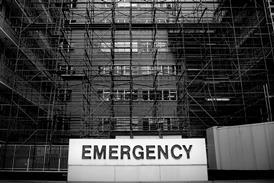Healthcare assistants are increasingly plugging the workforce gap, spending more time with patients than nurses, but receive the least amount of training, says Professor Lynne Gell
The role of healthcare assistants in hospitals is growing. But has investment in training kept pace with their greater responsibilities?
It won’t be a surprise to any patient in any hospital that healthcare assistants play a prominent role in providing care. They are often the most visible and constant part of a patient’s care regime.
How ironic then that when we talk about staffing challenges in our health system, HCAs are almost invisible. Commentators rarely talk about them.
Yet as our analysis of care staff numbers in 195 hospital trusts shows, HCAs are becoming increasingly important in a health system that cannot recruit all the nurses it needs.
Increasing demand
To be clear, this is not because the NHS hasn’t been able to replace the nurses it has lost. Our analysis also shows that on average hospital trusts have been relatively successful at maintaining absolute numbers.
The problem is that yesterday’s staffing numbers cannot cope with today’s care needs.
There are 2,200 more emergency admissions per day than there were five years ago, almost a third more diagnostic tests (31 per cent), while delays due to waiting for available home care have more than doubled in that time.
The crisis in recruitment is not so much a story of nursing numbers going into reverse but of trusts being unable to meet soaring demand as the population ages and presents more complex care needs.
There are 2,200 more emergency admissions per day than there were five years ago, almost a third more diagnostic tests (31 per cent), while delays due to waiting for available home care have more than doubled in that time
As a result, nursing vacancies have rocketed by over a fifth nationally and by almost a half in some regions in the past two years.
To plug the staffing shortfall, hospital trusts are increasingly turning to healthcare assistants. HCAs now comprise almost three in 10 (29 per cent) of all care staff nationally and over a third in some regions.
Numbers have increased by 6 per cent since 2015, or to put it another way, for every additional nurse recruited hospitals hired four HCAs.
There is no reason to suspect this trend will be reversed and every reason to think it will continue. HCAs are relatively easy to recruit and the potential pool of applicants is large – there are almost twice as many men working as HCAs than as nurses, for instance.
Overlooked resource
Yet as things stand, HCAs remain a frequently unsung and overlooked resource.
It was an issue neatly encapsulated by this anonymous healthcare assistant writing in a national newspaper a couple of years ago: “Health care assistants are in some ways not just the frontline, they are the only line. It’s a cruel paradox that HCAs spend the most time out of all health care professionals with patients, but have the least amount of training and supervision.”
That view is backed up by the facts. Studies suggest that HCAs spend more time at the bedside of a patient than nurses.
But according to the Talent for Care initiative launched four years ago, support staff only receive 5 per cent of the national training budget.
According to the Talent for Care initiative launched four years ago, support staff only receive 5 per cent of the national training budget
In my experience you will find no greater advocates of healthcare assistants than the nurses they work with and support. But if we are to harness their potential we need to give HCAs the training they need and devote more resources to training them well.
Fortunately, we are seeing trusts embrace initiatives like the two year nursing apprenticeship. But if our health system is going to rely increasingly on the work and dedication of HCAs, we need to reciprocate that commitment and give them the training they deserve.
BPP’s Care staffing in the NHS: the good, the bad and the promising, is available to download at www.bpp.com/insights


























No comments yet